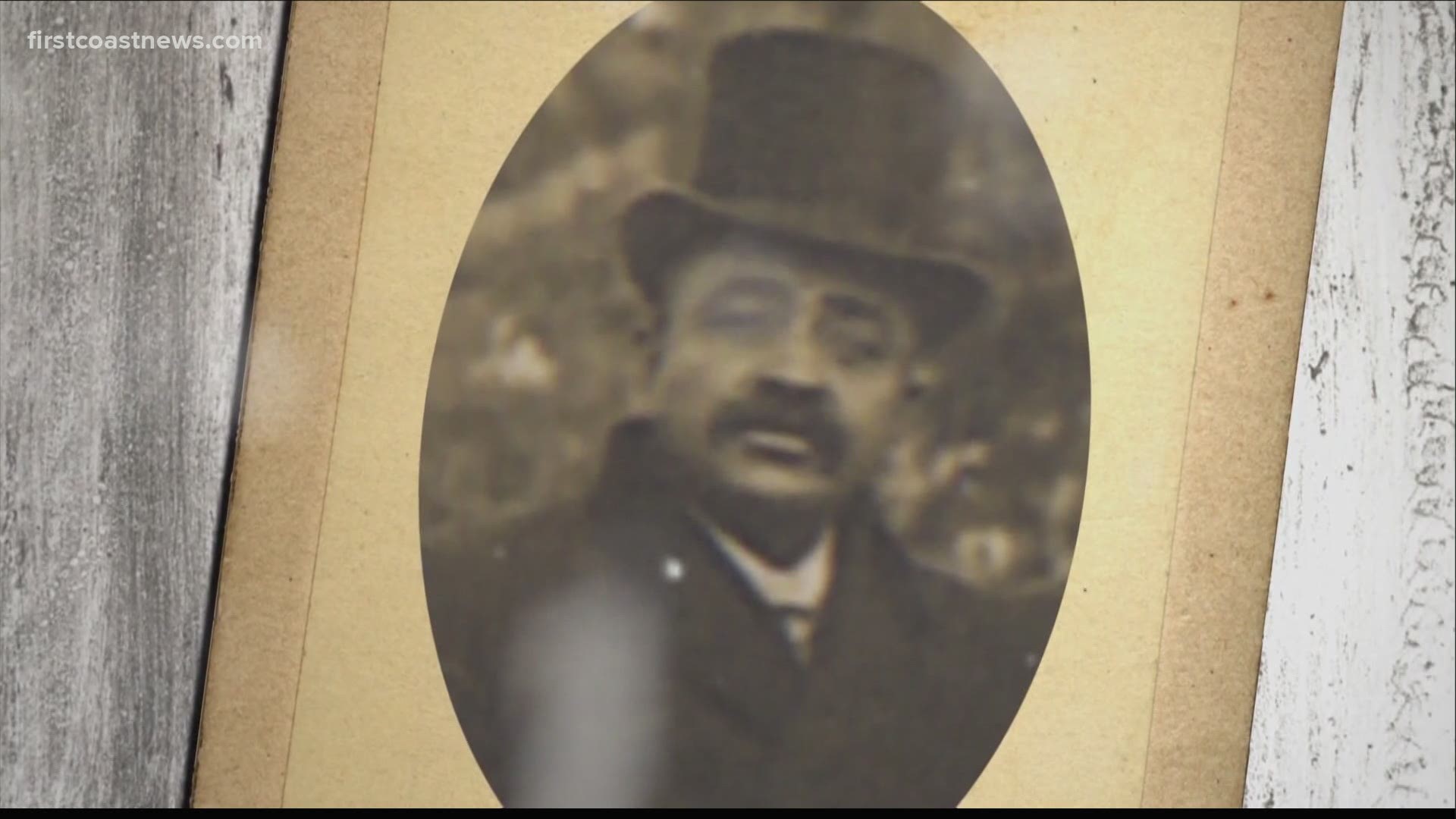ST. AUGUSTINE, Fla. — Many people have seen the signs outside hospitals and doctors’ offices that say "Heroes Work Here.”
However, most people have never heard of this local hero. He was a doctor who supposedly never lost a patient to the devastating Spanish Flu.
History buff Kevin Rose thought he knew St. Augustine's history.
"I have been in the tourism industry in St. Augustine for 15 years," he said.
But two years ago, he was "looking through a pictorial book of St. Augustine, I see this extremely well-dressed Black man and the caption says, Dr. D.W. Roberts. And I think, 'Who is this guy?'"
That guy was Dr. Daniel Webster Roberts.
"So I start looking into who he is, and I can't believe he's not instantly famous and instantly associated with St. Augustine," Rose said.
"He was known as Dr. D.W. Roberts. He was the first Black physician in St. Augustine. And he had an extraordinary life," Historian David Nolan said.
Nolan explained that Roberts was highly respected and cared for both Black and white patients in the early 1900s in St. Augustine.
Nolan said, "They said he had so many patients, spread over such a wide area, that he had to keep three horses ready at all times. So you know, if he wore out one, he would have yet another and yet another."
Rose learned that "Roberts had the largest medical practice in Florida."
And then it hit. The Spanish Flu of 1918.
"It was devastating all around the world," Rose said.
Nolan added, "The Spanish Flu was as deadly or more deadly than the current COVID crisis."
"It hit here just as hard as anywhere else," Rose noted. "Dr. Roberts was seeing patients for Spanish Flu from Ponte Vedra as far south as Ormand Beach. At one point he was writing 60 prescriptions a day dealing with the Spanish flu."
Nolan said "Dr. Roberts distinguished himself by treating more patients than anyone else, by not only treating his own patients but by tutoring the other doctors. And these were all white doctors."
Dr. Roberts' extraordinary legacy is that he never lost a patient to the Spanish Flu.
What was he doing that worked so well? Rose’s research hasn’t revealed the exact concoction but, "most of his prescriptions involve whiskey," Rose said.
He poured himself into his work, putting patients first.
Rose said, "unfortunately, his work ethic cost his own life."
Nolan added, "He worked himself literally to death. He was in an auto accident. It crushed his chest, and he got double pneumonia. And before the next year was out, although he was only 52-years-old, he died."
Very few people know of Dr. Roberts now. Rose wants to change that. He and his wife own the Santa Barbara Hospital Museum in St. Augustine.
Inside, they are re-creating an exhibit of Dr. Roberts’ office.
"It's not that he's a Black hero. He's a Saint Augustine hero. He's an American hero that nobody knows anything about it," Rose said. "This should be part of our history!"
Roberts saved hundreds of people’s lives, saw patients as people, not colors. A hundred years later, he’s an example of good medicine.

